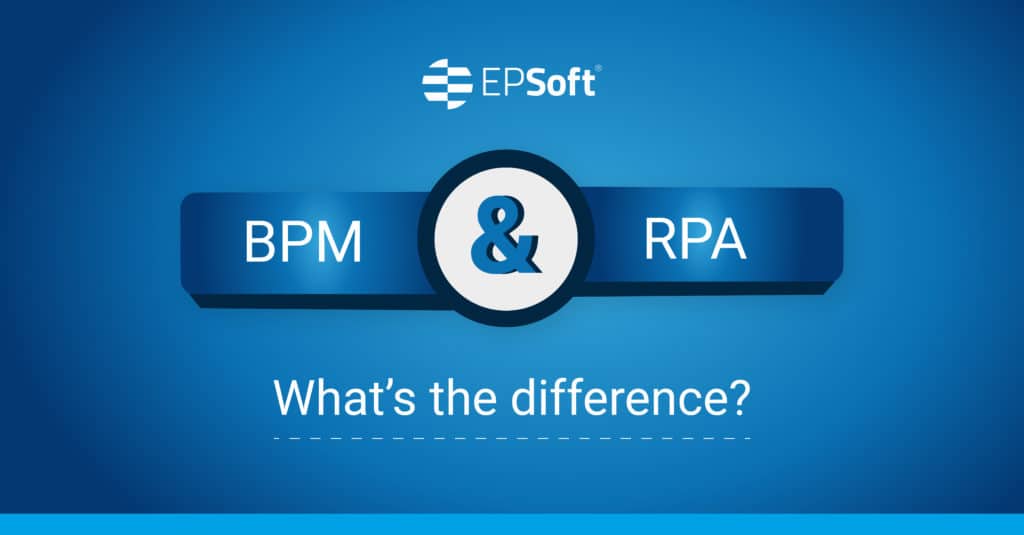Introduction
As business technology has evolved and advanced, we’ve learned how to apply the same ideas in different ways to reach different goals. Sometimes we use different technologies to reach the same goals. Unfortunately, this makes the terminology extra confusing because there is a lot of overlap. In process automation, this is especially true! Looking for some guidance on automation language and terms? Check out our Automation Terminology and Glossary.
Today, we will try to clear things up around robotic process automation (RPA) and business process management (BPM).
Business Process Management (BPM): A Canvas
Business process management (BPM) helps organize, optimize and streamline business processes. It is the canvas for mapping out all your ideal end-to-end business processes.
With BPM, we leverage technology to connect all the tasks within workflows and all the workflows within the business processes. It’s a big-picture view of how work gets done—providing the best perspective to make changes and drive efficiency with automation.
BPM uses a combination of tools and visualization methods to build new workflows that will include process automation. It is a strategic approach to process automation that considers all the workflows within all the business processes. Here’s a good way to remember it: When you think of BPM, think big-picture management.
Robotic Process Automation (RPA): A Tool
Like BPM, robotic process automation (RPA) is also about optimizing and streamlining how work gets done. However, unlike BPM, RPA is a low-code technology tool to help us complete an individual task.
With RPA, we create low-code automation “bots” to complete repetitive and time-consuming tasks with perfect accuracy. This improves production, efficiency and accuracy and frees people from mundane, monotonous work. Another mnemonic for you: When you think of RPA, think repetitive personal assignments.
Understanding the Strategy & the Tool
RPA accomplishes similar goals to BPM. There is also some overlap with how we talk about BPM objectives and RPA tactics. But, RPA is just one piece of the puzzle, solving individual tasks within a given workflow.
BPM concentrates on the big picture and guiding strategy—our canvas for building perfect end-to-end business processes, including some that might need RPA.
BPM & RPA in Action: A Complementary Approach
Let’s look at some examples of BPM and RPA in action.
With BPM, we can create our processes and see them end to end. Looking at invoice processing, for example, we can use BPM to see when the invoice arrives, who it’s routed to, where it is recorded, how it is reconciled, when the final payment is sent, and more. Another good example is HR onboarding. Here we might see email setups, new user licensing, computer procurement, scheduled training and the like.
Once we map these processes with BPM, we get the big-picture view. Then, we can make data-based decisions on what to change where in the workflows. This includes automating some tasks within the workflows using RPA. In our invoice processing example, it might include creating RPA bots to complete invoice matching, coding, and data entry. For onboarding, you might use bots to establish user accounts and complete payroll data entry.
BPM provides the overarching framework to manage and optimize your end-to-end business processes, while RPA provides a tool for automating specific tasks within workflows.
Examples of BPM and RPA
End-to-End Process Automation with BPM
- Send forms to new employee
- Acquire licenses
- Procure IT equipment
- Add employee to HR systems
- Set up new employee email
- Schedule orientation
- Schedule quarterly performance reviews
Task Automation with RPA
- Routing or rerouting emails
- Opening emails and attachments
- Moving documents
- Filling in pre-formatted forms
- Extracting, entering and migrating structured data

